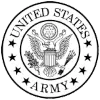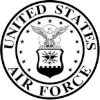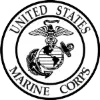Course Details
The CCNA-Implementing and Administering Cisco Solutions v1.0 course is a 5-day course that is designed to teach students how to install, operate, configure, and verify a basic IPv4 and IPv6 network. Students will learn how to configure network components, such as a switch, router, and Wireless LAN Controller. Students will also gain skills needed to manage network devices, and identify basic security threats.
Who should take this course?
This class is recommended for those pursuing their Cisco Certified Network Associate (CCNA) certification, which is the starting point for all Cisco network infrastructure certifications. It is ideal for entry-level networking engineers, administrators and technicians who support, operate and install Cisco networks.
The new CCNA course and certification now prepares associate-level IT professionals with skills in network security, automation and programmability. Students can build a foundation for a broad spectrum of IT careers with the new CCNA.
Key Course Details
- This is an intensive, extended-hours boot camp. Participants should expect to be in class for 12 hours on each of the five days.
- Lab time:
- 120 hours total over 90 days.
- Labs are one-to-one and on virtual machines.
- Be sure to log out of labs during class. Any remaining lab time can be used after class for additional practice and review.
Topics covered in the course include:
- Identifying the components of a computer network and describing their basic characteristics
- Describing the features and functions of the Cisco IOS Software
- Describing LANs and the role of switches within LANs
- Describing Ethernet as the network access layer of TCP/IP and describing the operation of switches
- Installing a switch and performing the initial configuration
- Describing the TCP/IP internet Layer, IPv4, its addressing scheme, and subnetting
- Describing the TCP/IP Transport layer and Application layer
- Exploring functions of routing
- Implementing basic configuration on a Cisco router
- Explaining host-to-host communications across switches and routers
- Identifying and resolving common switched network issues and common problems associated with IPv4 addressing
- Describing IPv6 main features, addresses and configure and verify basic IPv6 connectivity
- Describing, implementing and verifying VLANs and trunks
- Describing the application and configuration of inter-VLAN routing
- Explaining the basics of dynamic routing protocols and describing components and terms of OSPF
- Explaining how STP and RSTP work
- Configuring link aggregation using EtherChannel
- Describing the purpose of Layer 3 redundancy protocols
- Describing basic WAN and VPN concepts
- Describing the operation of ACLs and their applications in the network
- Configuring internet access using DHCP clients and explain and configure NAT on Cisco routers
- Describing the basic QoS concepts
- Describing the concepts of wireless networks, which types of wireless networks can be built and how to use WLC
- Describing network and device architectures and introduce virtualization
- Introducing the concept of network programmability and SDN and describing the smart network management solutions like Cisco DNA Center, SD-Access and SD-WAN
- Describing the management of Cisco devices
- Describing the current security threat landscape
- Describing threat defense technologies
- Implementing basic steps to harden network devices
Target Student:
Target candidates for this course include individuals seeking the CCNA Cisco Certified Network Associate certification. The course is also appropriate for support technicians
- Section 1: Exploring the Functions of Networking
- Section 2: Introducing the Host-To-Host Communications Model
- Section 3: Operating Cisco IOS Software
- Section 4: Introducing LANs
- Section 5: Exploring the TCP/IP Link Layer
- Section 6: Starting a Switch
- Section 7: Introducing the TCP/IP Internet Layer, IPv4 Addressing, and Subnets
- Section 8: Explaining the TCP/IP Transport Layer and Application Layer
- Section 9: Exploring the Functions of Routing
- Section 10: Configuring a Cisco Router
- Section 11: Exploring the Packet Delivery Process
- Section 12: Troubleshooting a Simple Network
- Section 13: Introducing Basic IPv6
- Section 14: Configuring Static Routing
- Section 15: Implementing VLANs and Trunks
- Section 16: Routing Between VLANs
- Section 17: Introducing OSPF
- Section 18: Building Redundant Switched Topologies
- Section 19: Improving Redundant Switched Topologies with EtherChannel
- Section 20: Exploring Layer 3 Redundancy
- Section 21: Introducing WAN Technologies
- Section 22: Explaining Basics of ACL
- Section 23: Enabling Internet Connectivity
- Section 24: Introducing QoS
- Section 25: Explaining Wireless Fundamentals
- Section 26: Introducing Architectures and Virtualization
- Section 27: Explaining the Evolution of Intelligent Networks
- Section 28: Introducing System Monitoring
- Section 29: Managing Cisco Devices
- Section 30: Examining the Security Threat Landscape
- Section 31: Implementing Threat Defense Technologies
- Section 32: Securing Administrative Access
- Section 33: Implementing Device Hardening
- Discovery 1: Get Started with Cisco CLI
- Discovery 2: Observe How a Switch Operates
- Discovery 3: Perform Basic Switch Configuration
- Discovery 4: Inspect TCP/IP Applications
- Discovery 5: Configure an Interface on a Cisco Router
- Discovery 6: Configure and Verify Layer 2 Discovery Protocols
- Discovery 7: Configure Default Gateway
- Discovery 8: Explore Packet Forwarding
- Discovery 9: Troubleshoot Switch Media and Port Issues
- Discovery 10: Troubleshoot Port Duplex Issues
- Discovery 11: Configure Basic IPv6 Connectivity
- Discovery 12: Configure and Verify IPv4 Static Routes
- Discovery 13: Configure IPv6 Static Routes
- Discovery 14: Configure VLAN and Trunk
- Discovery 15: Configure a Router on a Stick
- Discovery 16: Configure and Verify Single-Area OSPF
- Discovery 17: Configure and Verify EtherChannel
- Discovery 18: Configure and Verify IPv4 ACLs
- Discovery 19: Configure a Provider-Assigned IPv4 Address
- Discovery 20: Configure Static NAT
- Discovery 21: Configure Dynamic NAT and PAT
- Discovery 22: Log into the WLC
- Discovery 23: Monitor the WLC
- Discovery 24: Configure a Dynamic (VLAN) Interface
- Discovery 25: Configure a DHCP Scope
- Discovery 26: Configure a WLAN
- Discovery 27: Define a RADIUS Server
- Discovery 28: Explore Management Options
- Discovery 29: Explore the Cisco DNA Center
- Discovery 30: Configure and Verify NTP
- Discovery 31: Create the Cisco IOS Image Backup
- Discovery 32: Upgrade Cisco IOS Image
- Discovery 33: Configure WLAN Using WPA2 PSK Using the GUI
- Discovery 34: Secure Console and Remote Access
- Discovery 35: Enable and Limit Remote Access Connectivity
- Discovery 36: Configure and Verify Port Security
- FASTLab 1: Implement the Initial Switch Configuration
- FASTLab 2: Implement an Initial Router Configuration
- FASTLab 3: Implement IPv4 Static Routing
- FASTLab 4: Implement IPv6 Static Routing
- FASTLab 5: Troubleshoot VLANs and Trunk
- FASTLab 6: Implement Multiple VLANs and Basic Routing Between the VLANs
- FASTLab 7: Improve Redundant Switched Topologies with EtherChannel
- FASTLab 8: Implement Numbered and Named IPv4 ACLs
- FASTLab 9: Implement PAT
- FASTLab 10: Configure System Message Logging
- FASTLab 11: Secure Device Administrative Access
- FASTLab 12: Implement Device Hardening
The knowledge and skills that students are expected to have before attending this course are:
- Basic computer literacy
- Basic PC operating system navigation skills
- Basic internet usage skills
- Basic IP address
Available 24/7
Professional Instruction
Free Training Materials






Testimonials
This was the class I needed.
The instructor Jeff took his time and made sure we understood each topic before moving to the next. He answered all of our questions, and I don't know about the rest of the students, but was very pleased with this experience.
I finally understand how to use Excel.
-Amanda T (Yale New Haven Hospital).
Great class!
We were able to cover a lot of information in one day without getting overwhelmed.
-Maria R (Microsoft).
Free Repeats
Learn At Your Pace
No Travel
Professional Instruction
Affordable Pricing
Group Discounts



